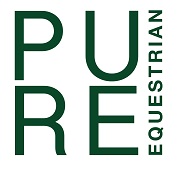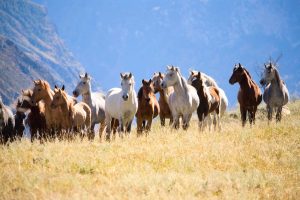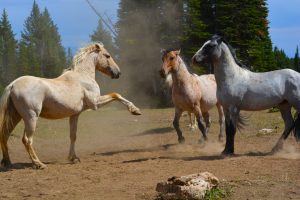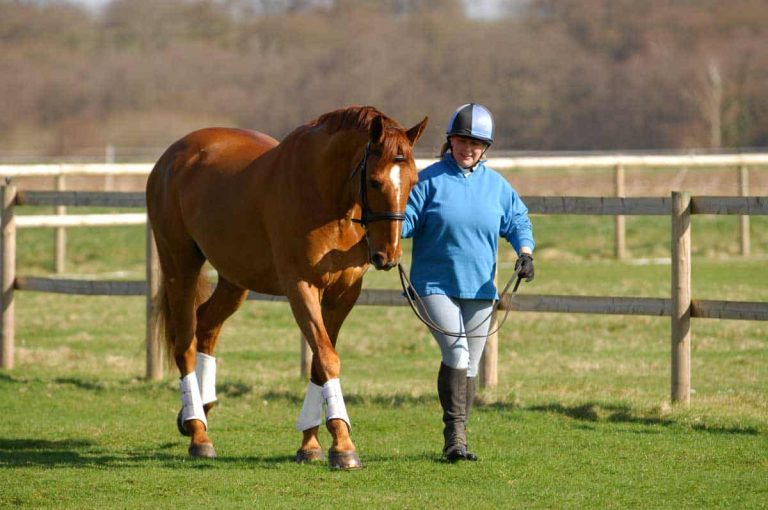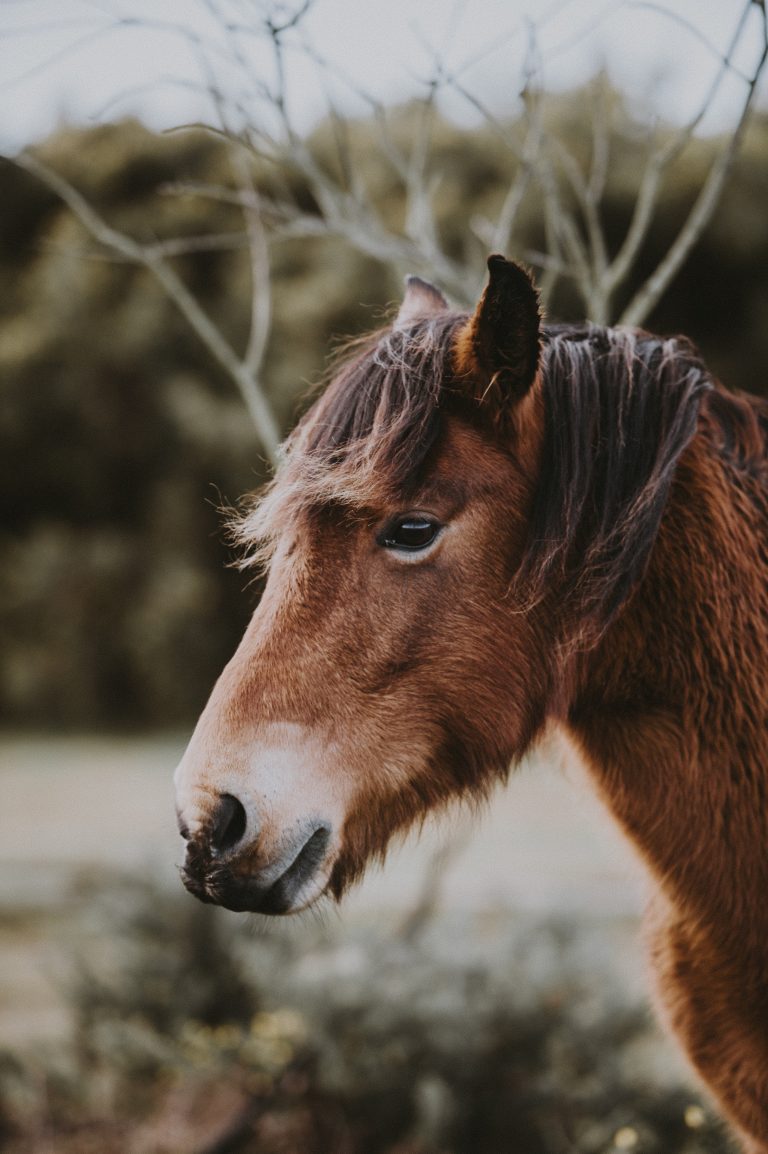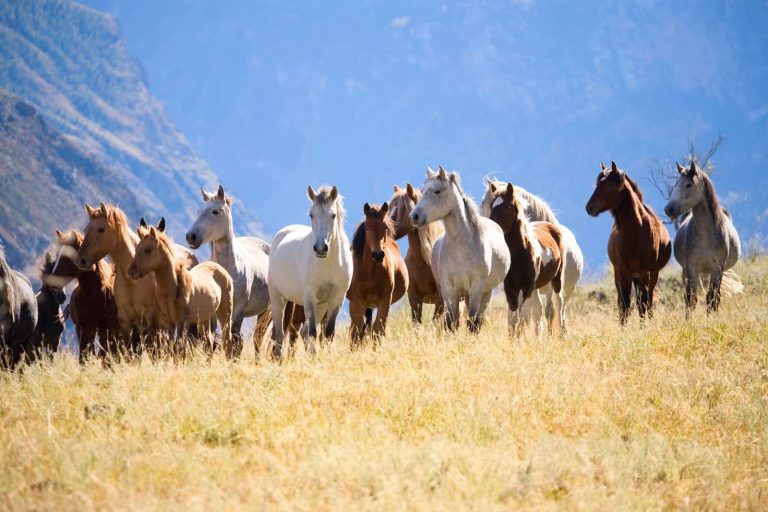So you’ve just brought home a new four-legged friend and you’re excited to introduce them to their new buddies in the herd. But wait, how exactly do you go about introducing the newcomer to the existing members of the group? In this article, we’ll explore some tips and strategies on how to smoothly integrate a new horse into a herd, ensuring a harmonious and stress-free transition for everyone involved. From establishing a pecking order to providing ample space for interaction, we’ve got you covered on everything you need to know about introducing your new horse to their herd.
Table of Contents
TogglePreparing for Introductions
Quarantine the new horse
Before introducing a new horse to an existing herd, it is essential to quarantine the new horse for a period of time. This quarantine period allows for the isolation and observation of the new horse to check for any signs of illness or contagious diseases. Quarantine typically lasts around two weeks to ensure that any potential health issues are identified and addressed before introducing the new horse to the rest of the herd.
Check for illnesses and vaccinations
During the quarantine period, it is crucial to have the new horse thoroughly examined by a veterinarian. This examination should include a comprehensive health check, including vaccinations and deworming. Ensuring that the new horse is up to date on vaccinations helps protect both the new horse and the existing herd from contagious diseases.
Observe the new horse’s behaviour
During the quarantine period, it is essential to spend time observing the new horse’s behaviour. Pay attention to how the horse reacts to different stimuli, such as humans, noises, and other animals. Observing the horse’s behaviour helps gain insight into its personality and any potential issues it may have, which can be useful when introducing it to the herd.
Make sure the new horse is familiar with being handled
Before introducing the new horse to the herd, it is crucial to ensure that it is comfortable with being handled. Spend time grooming, leading, and working with the horse to establish trust and familiarity. This step is particularly important if the new horse has had limited exposure to humans or has had a history of mistreatment. By familiarizing the horse with handling, it will be easier to manage and introduce it to the herd.
Selecting the Right Environment
Choose a neutral area
When introducing a new horse to a herd, it is best to choose a neutral area where none of the horses have established dominance. This ensures that no horse feels territorial or possessive over the space, reducing the likelihood of aggressive behaviour during the introduction process.
Ensure enough space for all horses
Having enough space for each horse is crucial when introducing a new horse to a herd. Overcrowding can lead to increased stress and potential conflicts between horses. Providing ample space allows each horse to have their own area to retreat to, reducing the likelihood of aggression and establishing a more harmonious environment.
Remove potentially dangerous objects
Before the introduction, it is important to carefully inspect the chosen area and remove any potentially dangerous objects. This includes sharp objects, loose wires, or anything that could pose a risk to the horses’ safety. Removing such hazards minimises the risk of injuries during the introductory period.
Provide ample food and water sources
Ensuring that there are enough food and water sources available is crucial when introducing a new horse to an existing herd. Horses are naturally competitive animals when it comes to resources, so having multiple feeding stations and water troughs helps prevent bullying and allows each horse to access food and water without feeling threatened.
Introduction Methods
Introducing one-on-one
One method of introducing a new horse to a herd is through one-on-one introductions. This involves allowing the new horse to meet each existing horse individually, gradually introducing them to the herd members. This method can be helpful in establishing initial social interactions between the horses while minimising the potential for aggressive behaviour.
Using a buddy system
Another introduction method is using a buddy system. By selecting a calm and friendly horse from the existing herd, you can introduce this horse to the new horse first. The buddy horse acts as a companion, helping the new horse feel more at ease during the introductory phase. This method can be particularly beneficial if the new horse is younger or more nervous.
Progressive introductions
Progressive introductions involve gradually increasing the amount of time the new horse spends with the existing herd. This can start with short, supervised sessions and gradually progress to longer periods of time. Progressive introductions allow the horses to build familiarity and establish bonds at their own pace, minimising the risk of aggressive behaviours.
Monitoring reactions and behaviour
Regardless of the method chosen for introductions, it is important to closely monitor the reactions and behaviour of each horse involved. Keep an eye out for any signs of stress, aggression, or injuries. By closely observing their interactions, you can intervene if necessary and ensure a safe and successful introduction.
Signs of Aggression or Stress
Excessive aggression or fighting
During the introduction process, it is important to watch for signs of excessive aggression or fighting between the horses. While some degree of establishing herd hierarchy is normal, persistent and severe aggression can indicate a problem. If aggression escalates to a dangerous level, it may be necessary to separate the horses and seek professional guidance.
Chasing or biting
Chasing and biting are common signs of aggression that may occur during the introduction process. While some chasing and biting can be expected as the herd establishes dominance, it is important to differentiate between normal behaviours and aggressive actions that could lead to harm. Monitor the horses closely and intervene if the chasing or biting becomes excessive or dangerous.
Separating horses if necessary
If any horse exhibits signs of excessive aggression or stress during the introductions, it may be necessary to separate them temporarily. Separation provides a time-out period for the horses to calm down and regroup. This can help reduce tension and allow for a more successful reintroduction at a later stage. Always prioritise the safety and well-being of all horses involved.
Establishing a Herd Hierarchy
Allow natural herd dynamics to develop
When introducing a new horse to a herd, it is important to allow natural herd dynamics to develop. Horses have a social structure and will establish a hierarchy within the herd. Resist the urge to interfere with this process unless it becomes necessary to ensure the safety and well-being of the horses involved.
Avoid interference unless necessary
While it is crucial to monitor the introductions, it is generally best to avoid interfering with the establishment of the herd hierarchy unless there is a risk of severe injury or excessive aggression. Horses are highly attuned to body language and cues from their herd mates, and interfering too much can disrupt the natural social dynamics.
Provide adequate resources for all horses
To minimise conflicts within the herd, ensure that there are enough resources, such as food, water, and shelter, for all horses. Competition over limited resources can lead to increased aggression. By providing adequate resources, each horse has a fair chance of accessing what they need, reducing the potential for conflict.
Monitoring and Supervision
Regularly check for injuries or illnesses
Throughout the introductory period, it is essential to regularly check each horse for any signs of injuries or illnesses. They may be the result of aggressive interactions or stress. Promptly addressing any health concerns ensures that each horse receives proper care and helps maintain a safe and healthy herd environment.
Provide continuous observation during initial days
During the initial days of the introduction process, it is crucial to provide continuous observation. By closely monitoring the horses, you can intervene quickly if any conflicts or issues arise. Being present and attentive helps ensure the safety and well-being of the horses during this critical phase.
Gradually increase monitoring over time
As the horses become more familiar with each other and adjust to the herd environment, it is still important to gradually increase monitoring over time. While they may establish their social dynamics, occasional conflicts or changes in behaviour can still occur. Regular observations help detect any potential issues early on and allow for swift intervention if necessary.
Considerations for Different Ages or Breeds
Separating by age or breed if needed
In some cases, it may be necessary to separate horses by age or breed during the introduction process. For example, stallions should be kept separate from mares to prevent unwanted breeding. Younger horses may need additional protection or guidance as they assimilate into the larger herd. Considering the specific needs and dynamics of different ages and breeds can help facilitate a smoother introduction.
Observe interactions between older and younger horses
When introducing older and younger horses, it is important to closely observe their interactions. Older horses may act as mentors and provide guidance to younger ones, but it is crucial to intervene if the older horse becomes excessively aggressive or dominant. Ensuring that the interactions are positive and nurturing helps foster a healthy dynamic within the herd.
Adjust the introduction process accordingly
Flexibility is key when introducing horses of different ages or breeds. Some horses may require more time or specific handling techniques to facilitate a successful introduction. Stay observant and be prepared to adjust the introduction process accordingly to meet the unique needs of each horse.
Managing Feeding and Watering
Ensure enough feeding stations and water sources
To prevent conflicts and ensure all horses have access to food and water, it is important to provide enough feeding stations and water sources. Each horse should have a fair opportunity to eat and drink without feeling threatened or bullied. Separating feeding stations or using multiple water troughs can help achieve this.
Prevent bullying or dominance over resources
Horses are naturally territorial when it comes to resources such as food and water. To manage feeding and watering, it is important to prevent bullying or dominance over these resources. Monitor the interactions closely and intervene if one horse consistently prevents others from accessing food or water. Ensuring fair access reduces stress and creates a more harmonious herd environment.
Consider individual feeding needs and habits
Each horse may have different feeding needs and habits, so it is important to consider these factors during the introduction process. Some horses may require special diets or feeding schedules. By understanding and accommodating individual feeding needs, you can promote the overall health and well-being of each horse in the herd.
Allowing Socialisation and Bonding
Encourage natural social interactions
Socialisation is a vital aspect of introducing a new horse to a herd. Encourage natural social interactions between horses by providing ample space and opportunities for them to interact. Allow them to establish bonds and hierarchies through non-aggressive behaviours such as mutual grooming, playing, and nuzzling.
Provide opportunities for bonding
Creating an environment that allows for bonding is essential during the introduction process. Horses establish valuable social connections through positive interactions. Provide opportunities for them to spend time together in a relaxed and supervised environment. This helps foster healthier relationships within the herd.
Allow mutual grooming and play
Mutual grooming and play are natural social behaviours for horses. These activities help build relationships and establish a sense of trust within the herd. Encouraging and allowing mutual grooming and play among the horses helps strengthen social bonds and promotes a positive herd dynamic.
Seeking Professional Guidance
Consult an equine veterinarian or behaviourist
If you have any concerns or encounter difficulties during the introduction process, it is always advisable to consult an equine veterinarian or behaviourist. These professionals have the knowledge and experience to provide expert guidance and support. They can assess the specific circumstances and offer tailored advice to ensure a successful introduction.
Get advice from experienced horse owners or trainers
Experienced horse owners and trainers can also provide valuable insights and advice when introducing a new horse to a herd. Reach out to reputable individuals who have successfully integrated horses into established herds. Their firsthand experience and guidance can help navigate potential challenges and ensure a smooth transition.
Consider professional supervision during introductions
In some cases, it may be necessary to have professional supervision during the introduction process. This is especially true if there are concerns about aggression or if the horses have a history of problematic behaviour. Professional supervision provides an additional layer of expertise and ensures the safety of both the horses and handlers.
In conclusion, introducing a new horse to a herd requires careful preparation, observation, and monitoring. Taking the time to quarantine the new horse, checking for illnesses, and familiarizing them with handling are essential steps. Selecting the right environment, choosing appropriate introduction methods, and closely monitoring for signs of aggression or stress are crucial for a successful introduction. Establishing a herd hierarchy, continually monitoring and supervising, considering different ages or breeds, managing feeding and watering, allowing socialisation and bonding, and seeking professional guidance when needed all contribute to creating a harmonious herd dynamic. By following these guidelines, you can help ensure a smooth and safe integration of a new horse into an existing herd, promoting both their well-being and the overall cohesion of the group.
